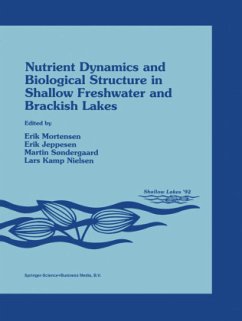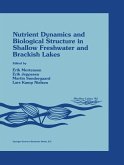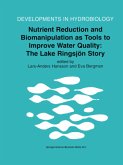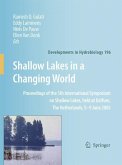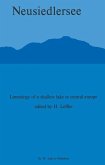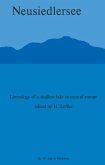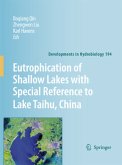Nutrient Dynamics and Biological Structure in Shallow Freshwater and Brackish Lakes
Herausgegeben:Mortensen, E.; Jeppesen, E.; Søndergaard, M; Kamp Nielsen, L.
Nutrient Dynamics and Biological Structure in Shallow Freshwater and Brackish Lakes
Herausgegeben:Mortensen, E.; Jeppesen, E.; Søndergaard, M; Kamp Nielsen, L.
- Broschiertes Buch
- Merkliste
- Auf die Merkliste
- Bewerten Bewerten
- Teilen
- Produkt teilen
- Produkterinnerung
- Produkterinnerung
The nutrient dynamics and biological structure of shallow non-stratified lakes differ markedly from that of deep and stratified lakes: for example, the return of nutrients lost through sedimentation is faster and the potential importance of fish and submerged macrophytes as food-web regulators is greater. In addition shallow lakes are more easily influenced by fluctuations in the physical environment caused by wind disturbance, temperature change, etc. Although shallow lakes are often the most common lake type in lowland countries, less attention has been paid to them than to deep stratified…mehr
![Nutrient Dynamics and Biological Structure in Shallow Freshwater and Brackish Lakes Nutrient Dynamics and Biological Structure in Shallow Freshwater and Brackish Lakes]() MortensenNutrient Dynamics and Biological Structure in Shallow Freshwater and Brackish Lakes233,99 €
MortensenNutrient Dynamics and Biological Structure in Shallow Freshwater and Brackish Lakes233,99 €![Nutrient Reduction and Biomanipulation as Tools to Improve Water Quality: The Lake Ringsjön Story Nutrient Reduction and Biomanipulation as Tools to Improve Water Quality: The Lake Ringsjön Story]() HanssonNutrient Reduction and Biomanipulation as Tools to Improve Water Quality: The Lake Ringsjön Story77,99 €
HanssonNutrient Reduction and Biomanipulation as Tools to Improve Water Quality: The Lake Ringsjön Story77,99 €![Nutrient Reduction and Biomanipulation as Tools to Improve Water Quality: The Lake Ringsjön Story Nutrient Reduction and Biomanipulation as Tools to Improve Water Quality: The Lake Ringsjön Story]() Nutrient Reduction and Biomanipulation as Tools to Improve Water Quality: The Lake Ringsjön Story74,99 €
Nutrient Reduction and Biomanipulation as Tools to Improve Water Quality: The Lake Ringsjön Story74,99 €![Shallow Lakes in a Changing World Shallow Lakes in a Changing World]() Shallow Lakes in a Changing World148,99 €
Shallow Lakes in a Changing World148,99 €![Neusiedlersee: The Limnology of a Shallow Lake in Central Europe Neusiedlersee: The Limnology of a Shallow Lake in Central Europe]() Neusiedlersee: The Limnology of a Shallow Lake in Central Europe77,99 €
Neusiedlersee: The Limnology of a Shallow Lake in Central Europe77,99 €![Neusiedlersee: The Limnology of a Shallow Lake in Central Europe Neusiedlersee: The Limnology of a Shallow Lake in Central Europe]() H. Lffler (ed.)Neusiedlersee: The Limnology of a Shallow Lake in Central Europe149,99 €
H. Lffler (ed.)Neusiedlersee: The Limnology of a Shallow Lake in Central Europe149,99 €![Eutrophication of Shallow Lakes with Special Reference to Lake Taihu, China Eutrophication of Shallow Lakes with Special Reference to Lake Taihu, China]() Eutrophication of Shallow Lakes with Special Reference to Lake Taihu, China110,99 €
Eutrophication of Shallow Lakes with Special Reference to Lake Taihu, China110,99 €-
-
-
The volume is divided into five main themes, each introduced by an invited speaker:
- Nutrient dynamics with special emphasis on sediment water interactions and changes in loading (Professor Lambertus Lyklema);
- Biological structure and trophic interaction (Professor Stephen T. Threlkeld);
- Submerged macrophytes: dynamics and role in the lake ecosystems (Ass. Professor Kaj Sand Jensen);
- Comparison of freshwater and brackish lake ecosystems (Professor Brian Moss);
- Modelling the impact of nutrients, the biological structure and the recovery process (Dr Marten Scheffer).
- Produktdetails
- Developments in Hydrobiology 94
- Verlag: Springer / Springer Netherlands
- Artikelnr. des Verlages: 978-90-481-4360-3
- Softcover reprint of hardcover 1st ed. 1994
- Seitenzahl: 520
- Erscheinungstermin: 28. Oktober 2010
- Englisch
- Abmessung: 279mm x 210mm x 28mm
- Gewicht: 1253g
- ISBN-13: 9789048143603
- ISBN-10: 9048143608
- Artikelnr.: 32102688
- Developments in Hydrobiology 94
- Verlag: Springer / Springer Netherlands
- Artikelnr. des Verlages: 978-90-481-4360-3
- Softcover reprint of hardcover 1st ed. 1994
- Seitenzahl: 520
- Erscheinungstermin: 28. Oktober 2010
- Englisch
- Abmessung: 279mm x 210mm x 28mm
- Gewicht: 1253g
- ISBN-13: 9789048143603
- ISBN-10: 9048143608
- Artikelnr.: 32102688

